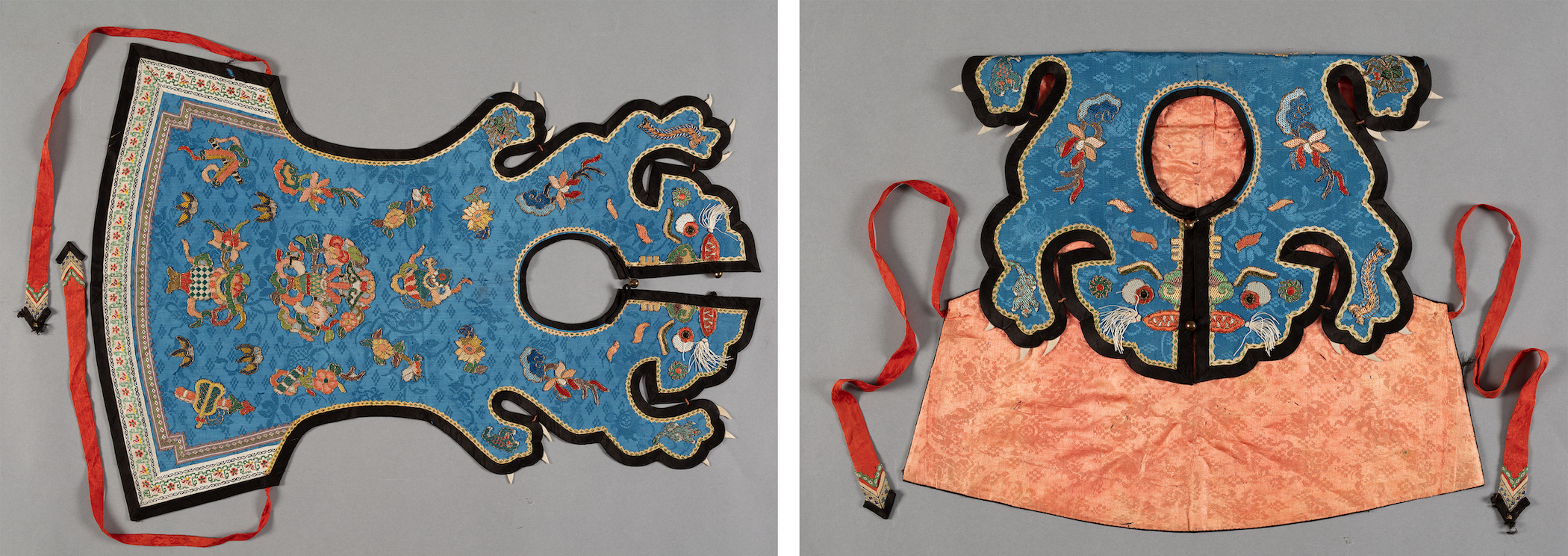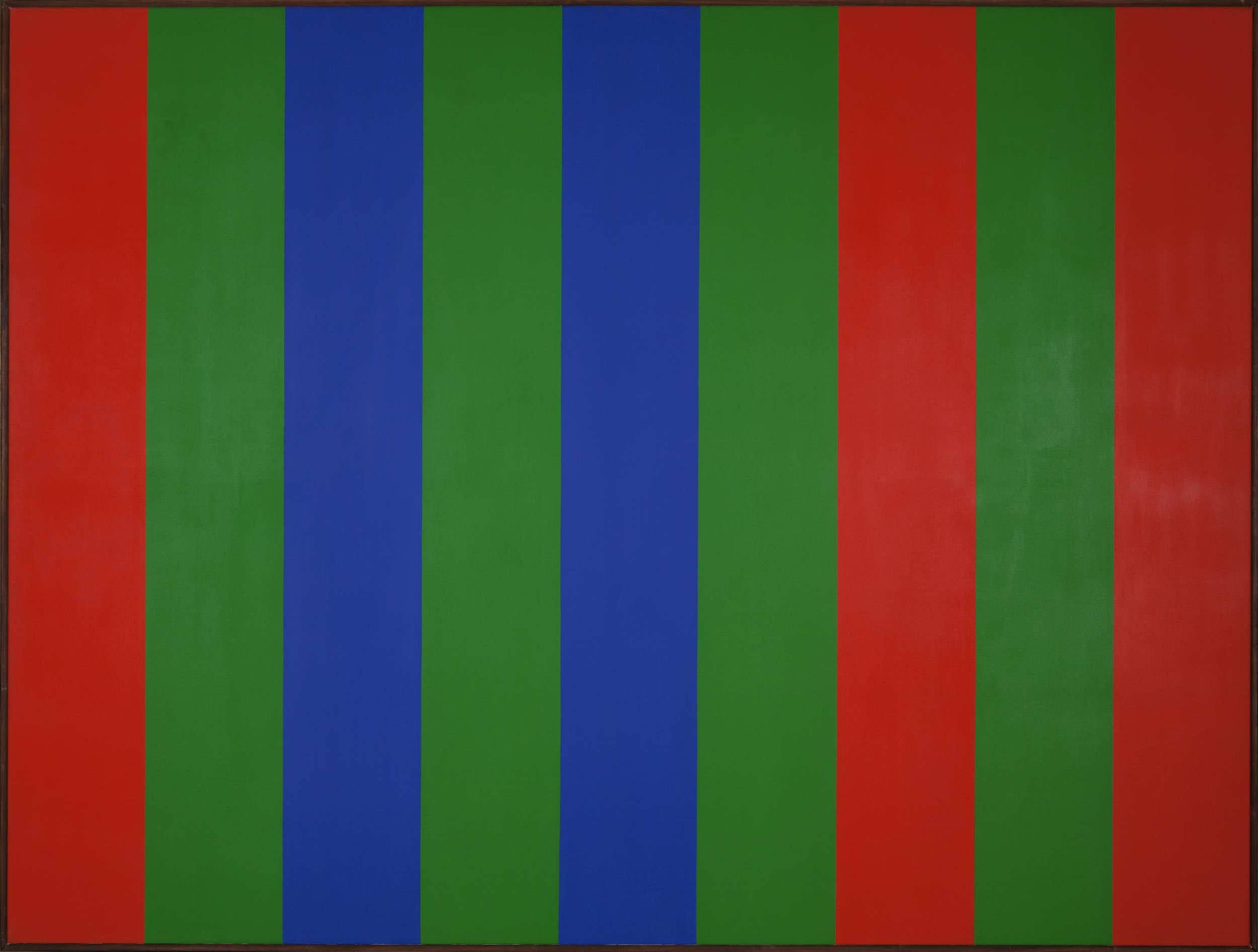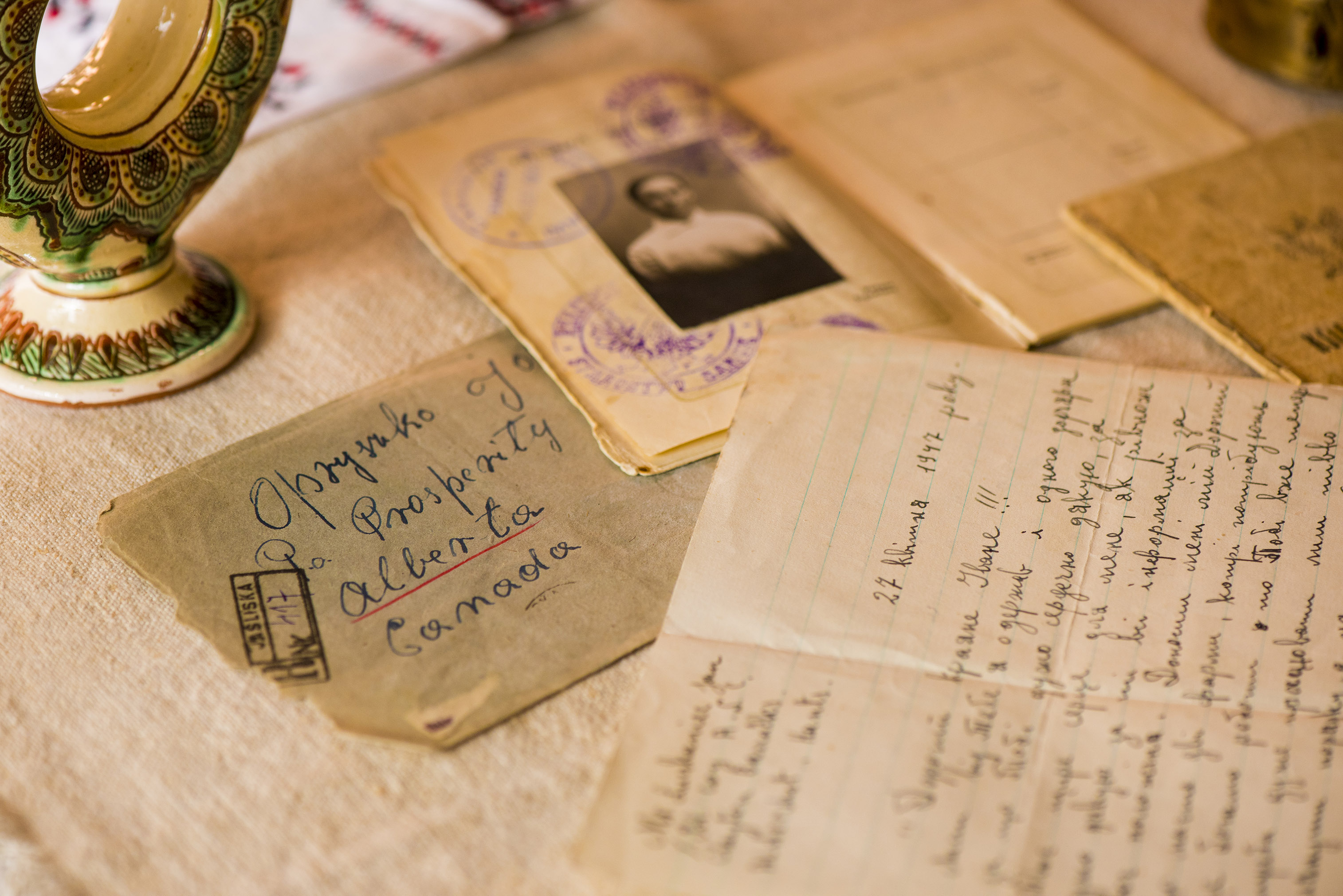Ferocity and the Five Poisons: Symbolism on Qing Dynasty Children’s Clothing
During the Qing Dynasty, mothers eager to protect their children from the evil forces in the world sought clothing with auspicious defenses. Tiger symbols were thought to protect children from demons by terrifying them with their ferocity. They also represent courage, strength, dignity, and military prowess. The Tiger-Shaped Blue Silk Bib for a Child (2005.5.20) from the Mactaggart Art Collection is an example of this practice. Made of silk damask and embroidered with auspicious symbols, it is an illustration of a protective garment for a toddler in Qing Era China.
On the bib there are delicate counted stitch flowers, Daoist symbols, and Five Poisons that have been appliqued onto a blue silk damask ground fabric, which is edged with fashionable late Qing commercial ribbons and a black silk satin binding. The fierce tiger face, which has a slit through the middle, would fasten around a young child’s neck with brass buttons, while the red silk satin ribbons would tie securely around his waist. When the collar front opening is buttoned shut, a wang character (王), which means king, can be seen in gold metal-wrapped thread. The tiger is considered to be the “king of beasts'' in Chinese mythology.1 This special silk garment, likely made by the child’s mother or maternal grandmother, would have been worn during festivals or other special occasions.2

"Tiger Shaped Blue Silk Bib for a Child", Qing Dynasty; silk damask embroidered with silk floss and metal-wrapped threads; Mactaggart Art Collection, University of Alberta Museums; Gift of Sandy and Cécile Mactaggart; 2005.5.20
Tigers were thought to help ward off evil spirits and were often included with the Five Poisons due to the homophonic nature of Chinese auspicious symbols. The tiger is considered to be a solitary creature, and the character for “solitary” (独) and the character for "poison" (毒) are both pronounced du.3 In addition to the tiger itself, this bib has four of the other typical Five Poisons - a centipede on the left front paw, a lizard on the right front paw, a three-legged toad on the right back paw, and a spider on the left back paw. The combination of these insects, reptiles, and amphibians was meant to counteract harmful influences or sickness (such as colic), especially for families that only had one son.4 Garments with these protective symbols, including hats, collars, bibs, dudus, were typically worn for the Dragon Boat Festival, which is celebrated on the fifth day of the fifth lunar month.
Clothing imbued with symbolism is a distinctive feature of Qing Dynasty fashion, and it is no more apparent than in children’s clothing of the period. In the Mactaggart Art Collection, tigers are most often found on fourth rank military rank badges. Due to the importance of fidelity, ancestor worship, and continuation of family lines in China, young boys were primarily bestowed with these protections, as, according to Confucian beliefs, their survival was key to families lasting beyond a single generation.5 Additionally, high infant mortality in this time period led to grand celebrations once an infant survived to one month old. At these celebrations, the infant would receive their name and a specialized hat.
The Mactaggart Art Collection is composed of more than 1,000 rare works of art, including textiles, costumes, paintings, handscrolls, albums, engravings, and other artifacts from ancient and modern East Asia. It was generously donated to the University of Alberta in 2005 by Edmonton philanthropists Drs. Sandy and Cécile Mactaggart. The collection furthers our knowledge of East Asian cultures, and informs the research of students and scholars world-wide.
1 Williams, C.A.S, Chinese Symbolism & Art Motifs, p. 399
2 Garrett, Valery, Chinese Clothing: An Illustrated Guide, p. 150
3 https://primaltrek.com/fivepoisons.html. Accessed January 5, 2022
4 Williams, C.A.S, Chinese Symbolism & Art Motifs, p.187
5 The Baltimore Museum of Art, Guardian Spirits: Magical Clothing for China’s Children, p. 1



